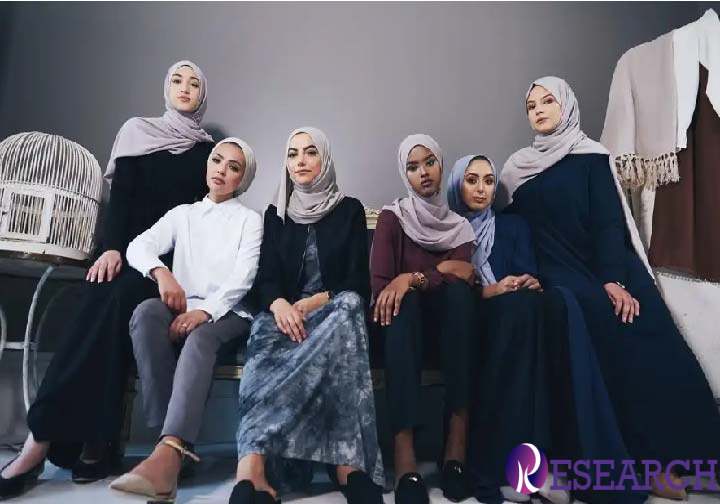Hijabhoojup—this term might seem unfamiliar to many, but it’s about to make waves. In today’s fast-paced world, the curiosity surrounding various cultural and societal trends is ever-growing, and ‘hijabhoojup’ is one such topic that has started gaining attention. This article delves into the essence of hijab-hooj-up, exploring its roots, significance, and relevance today.
What is Hijabhoojup?
If you’re wondering what ‘hijabhoojup’ means, you’re not alone. In simple terms, hijab-hooj-up is an evolving concept with roots in modesty, culture, and self-expression. Although the word might not yet be part of everyday language, it symbolizes an intriguing blend of tradition and innovation. Think of it like a bridge between old customs and the need for individuality in the modern world.
Origins of Hijabhoojup
Where did hijabhoojup come from? The origins of this practice are thought to trace back to various cultural traditions, each with its own way of representing modesty and inner values. By merging ancient traditions with contemporary societal norms, hijab-hooj-up has evolved into something unique. It’s not just about attire; it’s a broader reflection of personal belief and the society around us.
Why Hijabhoojup Matters Today
In today’s world, why does hijabhoojup matter? You might ask this question because it’s easy to assume that older traditions have no place in the fast-paced modern world. But hijab-hooj-up is a practice that stands strong because it embraces both tradition and personal freedom. It reminds us that our identity, culture, and personal choices still play a critical role in how we express ourselves today.
Cultural and Social Impact
The social impact of hijabhoojup is far-reaching. It acts as a way for people to connect with their heritage while adapting to a globalized world. From clothing to the way people carry themselves, hijab-hooj-up has introduced a fresh perspective on how culture and society are interwoven. It’s a quiet revolution that echoes across different parts of the world, allowing individuals to find common ground through modesty and authenticity.
Common Misconceptions
Every evolving trend has its fair share of myths, and hijabhoojup is no exception. One of the most common misconceptions is that it’s restrictive. However, hijab-hooj-up is not about enforcing strict codes but about allowing flexibility within modest expressions. Another myth? That it’s only for certain groups of people. In reality, hijab-hooj-up can resonate with anyone, regardless of background.
How Hijabhoojup is Practiced
So, how is hijabhoojup practiced? The beauty of hijab-hooj-up lies in its diversity. It’s not one-size-fits-all. For some, it might involve modest dressing in public spaces, while for others, it could be about how they communicate their values through lifestyle choices. hijab-hooj-up can manifest in various forms depending on personal beliefs and societal norms.
The Connection Between Hijab and Hijabhoojup
You’ve probably noticed the word “hijab” within hijabhoojup. Is there a connection? Absolutely. While hijab traditionally refers to modest dress in some cultures, hijab-hooj-up expands on this concept. It’s not just about covering one’s physical body but also reflecting one’s inner virtues and societal responsibilities. hijab-hooj-up takes the idea of modesty to another level, encompassing everything from attire to thoughtfulness in daily interactions.
Hijabhoojup in Modern Society
Modern society is constantly changing, but hijabhoojup continues to thrive. Why? Because it evolves with the times. Just as fashion trends adapt, so does hijab-hooj-up, allowing people to express their values while keeping pace with contemporary standards. Think of it like technology—you adapt to the latest version while keeping the core essence intact. hijab-hooj-up is a living, breathing tradition that stays relevant by being flexible and inclusive.
Future of Hijabhoojup
Where is hijabhoojup headed? As the world becomes increasingly interconnected, it’s likely that hijab-hooj-up will continue to evolve, drawing influence from various cultures and beliefs. It could become a universal symbol of modesty, transcending geographical boundaries. The future looks promising for hijab-hooj-up, as more people appreciate its blend of cultural identity and modern sensibilities.
Conclusion
Hijabhoojup is not just a trend; it’s a movement that combines history, culture, and modernity. Whether you’re already familiar with it or just learning about it, one thing is clear: hijab-hooj-up is here to stay, constantly shaping the way we think about modesty and self-expression.
FAQs
1. What exactly does hijabhoojup mean?
Hijabhoojup is an evolving concept rooted in modesty and cultural expression. It represents a fusion of tradition and personal individuality in modern society.
2. Is hijabhoojup the same as wearing a hijab?
While the word hijab is part of hijab-hooj-up, the concept goes beyond attire. It incorporates broader cultural and societal practices, reflecting modesty in both appearance and behavior.
3. Can anyone practice hijabhoojup?
Yes, hijabhoojup is not restricted to any specific group. It’s a versatile concept that anyone can relate to, regardless of their cultural or religious background.
4. How does hijabhoojup differ from traditional practices?
Traditional practices might focus strictly on attire, whereas hijab-hooj-up encompasses both outward appearance and internal values. It adapts to modern sensibilities while maintaining its core essence.
5. Will hijabhoojup become more mainstream in the future?
It’s likely! As societies continue to evolve, hijab-hooj-up may gain more recognition as a universal concept of modesty and cultural expression, adapting to global influences.






